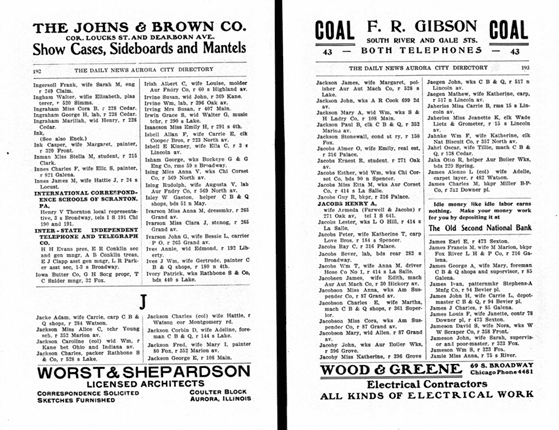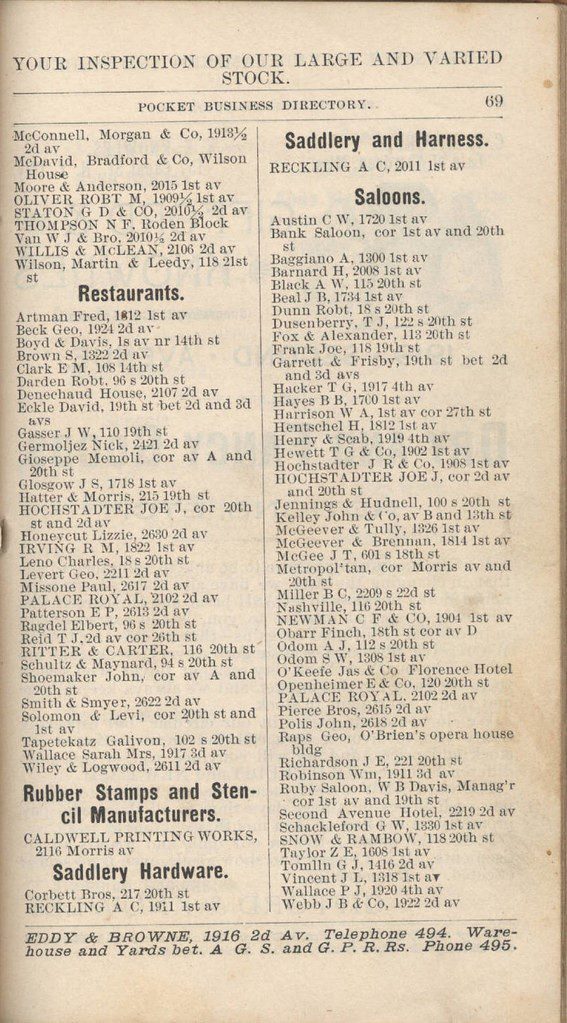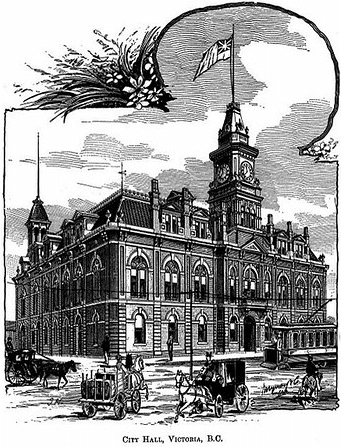Navigating City Directories for Genealogy, Part 2 of 2
The last blog article discussed city directories and how to find them. Once you have found your ancestor in a city directory, what next? This article will help answer that question. City directories have many uses in genealogy.
How to use city directories
Each directory in which you find your ancestor places them in a specific place at a particular time. Because they were usually taken annually, they can fill in the residence information between censuses or substitute censuses in which your ancestor may be missing, especially the 1890 census.
Additionally, city directories show ancestors’ occupations and can indicate when an ancestor changed employers. City directories may also give clues to military service in WWI or WWII or indicate the existence of a local photographer.

Other genealogically valuable clues from city directories include indirect evidence about marriage, death, divorce, and moving. If a single woman or a widow is listed on the city directory, she may be listed in the next publication under her (next) husband after getting (re)married. Or if a man dies, his wife might be listed as a widow on the following directory. Some directories listed the wife’s maiden name in parentheses. If a couple divorced, each one might be listed separately in the directory following the divorce. A known child of an ancestral couple suddenly appearing in the city directories suggests a coming of age.
For a family that moved repeatedly within the same city, you might see the same head of household listed at different addresses, as is the case with John H Chapman (discussed later). A migration from one city to another would be marked as a disappearance from one directory and an appearance in another. While census records will indicate which decade a family moved, city directories can suggest the exact year the move occurred. Some city directories make it easier to determine migrations by indicating when residents moved out or from where new residents moved in.
The previous blog mentioned street directories within the city directories. These can identify people who lived at the same address, and relationships can be inferred based on surnames. Street directories and maps can also help in identifying neighbors of your ancestors.
Case study
John H Chapman was traced in the city directories in Knoxville, Tennessee, in the 1880s. He was found in the 1882, 1884, 1886, 1887, and 1889 directories.[1] Knoxville had no directory published in 1883. John H Chapman was missing in the 1885 and 1888 directories. Each directory listing John H Chapman showed him at a different address. His occupation was a carpenter, abbreviated as carp.
Two John Chapmans lived in Knoxville during that time, and their middle initials differentiated them. John H Chapman was the ancestor, while John E Chapman was not. It is evident from the directories that John E Chapman was a successful businessman. It is essential to be aware of multiple people of the same name in the same area to differentiate them. In this case, the city directory aided in that.

It was still unclear when John H Chapman moved to Knoxville, so the search of Knoxville city directories was widened to include 1876 up to 1903. Surprisingly, no directories for him were found other than the ones mentioned above. This suggests that John H Chapman was in Knoxville from at least 1882 to 1889. He had a daughter born in Michigan in 1878. No record of him has been found between those years, so there is a four-year window for his possible migration to Tennessee. Records have yet to be found for him after 1889. Tennessee death records were searched after 1889, so far to no avail.
The FamilySearch profile of John H Chapman indicated he had a son born in Rhode Island in 1886. The parents’ names on the child’s birth records matched the ancestral couple’s names, but they are common names, and the reported birthplaces didn’t match other evidence. The city directory showing John H Chapman in Knoxville, Tennessee, that year was negative evidence of his presence in Rhode Island, suggesting that he could not have had a child in Rhode Island.
Other information in directories
When using city directories, refer to the introductory information, the title page, and any information in the front and back of the directory. This will allow you to gain information that will help you decipher the directory and discover more about your ancestor than just their name and address. Different publishers and towns used different formats; the introductory information can guide you. Here, you will find information about what towns are covered in the directory, indications of a change in coverage, and indications of whether the streets or houses were renamed or renumbered. If your ancestors disappeared from the directory, it could be that they lived in an area covered one year but not the next. Additionally, this will let you know if your ancestor changed addresses without moving. It may also list years not published, which is how it was discovered that Knoxville did not publish a directory for 1883.

It is also helpful to read the abbreviation guide, which is usually included in the introductory section of the directory. It is unsafe to assume abbreviations because one abbreviation could stand for multiple things, or one word can be abbreviated in various ways. The abbreviation key can help you identify occupations, such as in the Chapman case. Some city directories have abbreviations for street names or given names. A reasonably comprehensive list of abbreviations used in city directories can be found in GenealogyInTime Magazine.
The previous blog article mentioned that different directories have different ways of indicating people of color. The abbreviation guide usually includes a key for how they identified them. This can be handy to you if you are researching African American ancestors in the city directories.
Other information in these parts of the directories includes organizations and unions that existed at the time, a list of omissions, corrections, and removals, and lists of schools, churches, and cemeteries.
When searching directories for ancestors with Scottish or Irish names that begin with Mc, Mac, Von, or O’, search with and without those prefixes. Some directories may have disregarded those prefixes in their alphabetization. My grandmother’s maiden name is McElhinney. If I’m searching for any ancestors on that line in the city directory and can’t find them, I might try searching Elhinney instead. Another search strategy is to search only by last name, allowing the search results to show other people with the same name. Sometimes it is helpful to browse the images. It is fairly easy to find a particular surname this way because they are alphabetized. This also means families or individuals with the same surname are listed together. Note that city directories, like other records, can butcher your ancestor’s surname. Searching for a known address or only the first name can help get around that issue.

It is also helpful to search for your ancestor in every year of the city directory. This was done when searching for John H Chapman. Searching the database did not generate results for every year, so the missing years were browsed. Searching for him, but not finding him, increased the confidence that he was not in the directory and may not have been in town. Never skip a year in your city directory research. This also allows you to pinpoint your ancestors in specific locations and employers. You can also take the information from the consecutive directories to form a timeline of your ancestor’s life.
MyHeritage consolidates city directories for the same person by matching the same information across multiple directories. For ancestors which it accurately consolidates, you can see it all in one place. This can help infer information from directory clues. MyHeritage’s algorithms will even generate hints based on the inferred information.
Once you have the address where your ancestor lived, plug it into Google Maps. If the address still exists, you can go into street view to see what it looks like in the modern day.
Start searching for your ancestors in city directories and see what you discover about them. The more directories you find your ancestor in, the more you’ll learn. If you need help, contact Lineages.
Katie
Resources
- https://familytreewebinars.com/webinar/so-you-think-you-know-all-about-city-directories/?category=records&subcategory=citydirectories
- https://familytreewebinars.com/webinar/how-a-city-directory-worked-for-me-again/?category=records&subcategory=citydirectories
- https://familytreewebinars.com/webinar/city-directories-much-more-than-ye-olde-phonebooks/?category=records&subcategory=citydirectories
- https://familytreewebinars.com/webinar/city-directories-no-town-too-small-no-clue-too-little/?category=records&subcategory=citydirectories
- all images are public domain.
[1] T J Middlebrook, compiler, the Directory of Knoxville, 1889, digital images, Ancestry (https://ancestry.com : accessed 3 February 2023), U.S., City Directories, 1822-1995>Tennessee>Knoxville>1889>Knoxville, Tennessee, City Directory, 1889, image 60.
